Did you ever harvest a bunch of radishes from your garden and wonder what to do with them all?
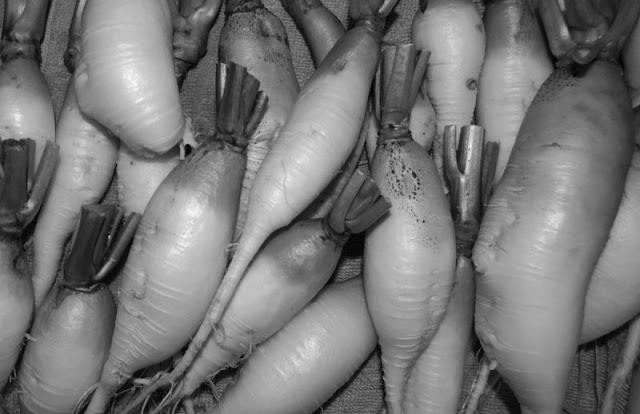
We have lots of daikons and icicle radishes coming in from the gardens right now and Rachel is managing to process them all wonderfully. One of our favorite ways to preserve radishes is to pickle them via live fermentation.
How to Ferment Radishes Into Pickles
Here’s how to ferment radishes the easy way, with just water, salt and radishes.
First, pick your radishes
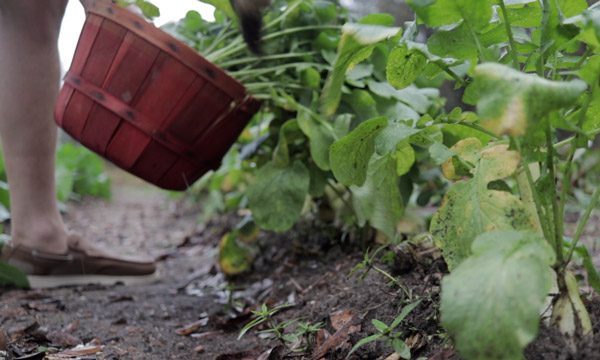
Wash and peel your radishes.
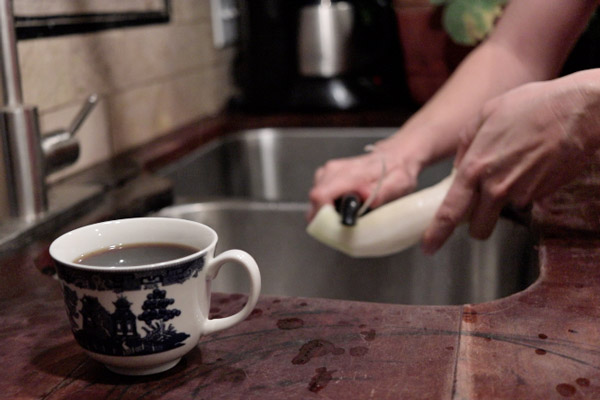
Coffee is not required for this step, but is highly recommended.
Once you have your cleaned and peeled radishes, chop them up into pieces and put them in a wide-mouth mason jar. We ferment in half-gallon jars.
Fill your jar to the top, then put in some sort of follower. The fermentation lids and followers we use are here.
If you don’t have fancy followers, just put a cabbage leaf or something on top to keep the radish pieces submerged beneath the brine you’re about to make. To make brine, add three tablespoons of salt to a quart of water and stir until the salt is completely dissolved.
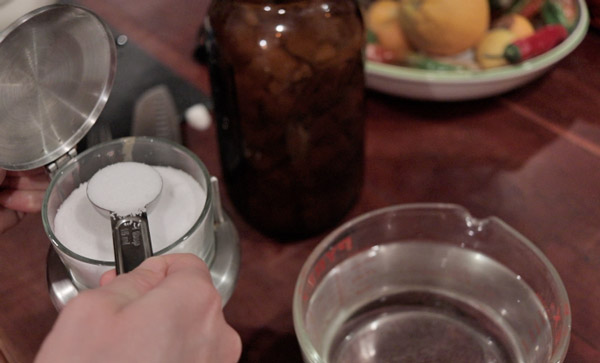
On YouTube, Betty comments:
My brine for my sauerkraut is 1 tsp per cup water, but that is after I have set the cut pounded cabbage that I sprinkled the layers salt for a half hour hour or even an hour…not measuring the salt there…did you say 3 tbsp per quart?? Yes, I did rewind and check, but that seems very salty…I am hesitant, only because I fermented some cucumbers earlier this year, 1.5 tsp salt/cup water brine, and other herbs, same weight and same lid, they were terrible!!! soggy and about fell apart…oh, well, just have to live and learn, I hope.
The lower the salt, the worse results we’ve had with vegetables getting soggy and having off flavors.
We make our pickled radishes and sauerkraut, kimchi, beets, etc., very salty.
Up in Tennessee during winter, a light brine was fine. Down in the Caribbean and in Florida, much more salt was required. It also takes much less time to get sour in a warmer environment. In cooler Tennessee, our ferments might sit for a couple of weeks on the counter. In Grenada, they sat for only three days before being perfect, then we would put them in the fridge to keep the flavors from going off.
Pour your brine over your vegetables and then shut the jar.
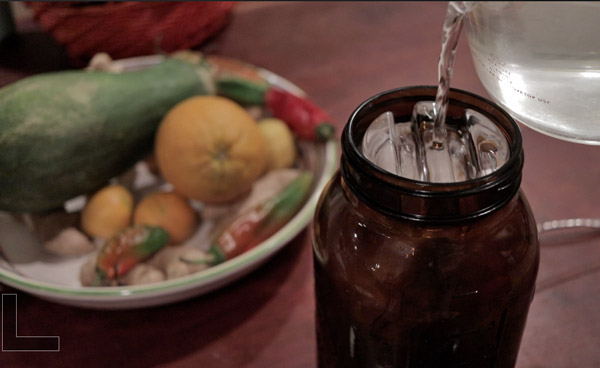
If you are using regular mason jar lids, just leave them slightly cracked open so your jars won’t explode.
After five days at room temperature (when the weather is around 75 degrees), the radishes will be pleasantly tart and ready to eat. If you want them more sour, leave them out on the counter longer. If not, put them in the fridge. They’ll keep just fine for months. We eat fermented radishes with many of our meals, including with scrambled eggs and bacon for breakfast! Live fermented radishes contain a wide range of beneficial bacteria and are excellent for your gut health. Plus, they’re so easy to make you can eat them every day if you like!
A resource I found useful when I first got into fermentation was Sandor Katz’ book Wild Fermentation.
I highly recommend pickling your own vegetables. It’s not hard and it won’t kill you. Once you do it once successfully, you’ll be pickling vegetables for the rest of your life.


1 comment
Three tablespoons of salt per quart of water is a ratio that is just under 5% (~4.6%), and that is the same ratio I have seen used for brining turkey: the recipes often call for a cup and a half of salt for two gallons of water. Apparently seawater is about 3.5%. Your commenter’s formula is about 2%.
Comments are closed.